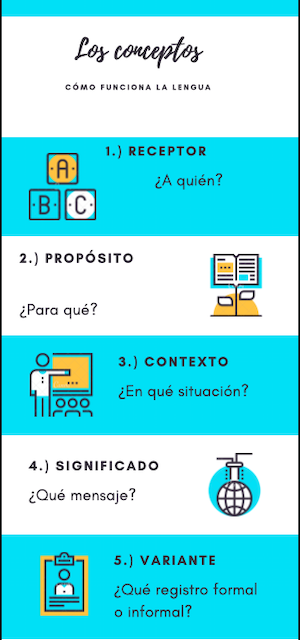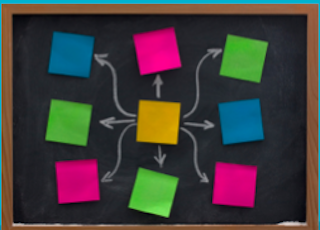Summary
The Spanish B course consistently and effectively integrates essential elements of the Diploma program and the nature of the subject. Throughout the entire website, you will observe how all these elements permeate the proposed activities and help you develop the attributes of the learning community profile.
The objective of the Spanish B course is to develop the ability to communicate through language, the develpment of skills, themes, texts and concepts.
In the Spanish B course, you will surely study grammar, vocabulary and pronunciation integrated into skills. Here you will also see it in the same way, but you also have a complete section for each of these language components:
Grammar
In this section: You will find a description and consolidation of grammar points that are particularly relevant for this level, explanatory videos of different grammatical points and numerous exercises to practise everything that is included...
Vocabulary & Functions
In this section: You will find grounded practice on vocabulary and communicative functions. The vocabulary section is divided into the five themes: Identities, Experiences, Human ingenuity, Social organization and Sharing the planet. The functions...
Pronunciation & Intonation
In this section: You will find models for pronunciation using videos, exercises and activities for practice and different techniques for a better pronunciation and fluency. Some important points Te recomendamos que: We recommend that you:
You will be able to develop the ability to communicate in Spanish and this communication will be demonstrated through language skills: receptive skills, productive skills and interactive skills.
We have proposed four steps for developing each skill.
Expresión escrita (Writing)
- Decide on the concepts and type of text
- Generate ideas
- Structure and organise the text
- Write and edit
Comprensión de lectura (Reading)
- Read the text quickly
- Reread the text carefully
- Read the questions and look for the answers
- Review the answers
Comprensión auditiva (Listening)
- Get ready and read the instructions
- Listen and answer the questions
- Listen again, check and finish writing your answers
- Review the answers
Expresión oral (Speaking)
- Practise your speaking
- Present your visual stimulus/literary extract
- Talk about the visual stimulus/literary extract
- Talk to your teacher about general topics
All themes are prescribed: Identities, Experiences, Human ingenuity, Social organization and Sharing the planet. It is important that you see the five themes in a balanced way. The topics within the themes are not compulsory (Perhaps your teacher has chosen different topics from the ones chosen here, but do not worry about this!).
This is an example of how we worked on each theme when developing writing (paper 1).
The objective of using written, oral, visual and audiovisual texts is to develop your receptive, productive and interaction skills by focusing your attention on the receiver, purpose, context, meaning and variant (concepts) of the text that you want to read, produce or understand.
Three different types of texts

You will find examples of all these types in the development of the different skills.
The concepts will help you discover why people use the language and how they use it, i.e., how language works.
The Spanish B course will help you develop your ability to communicate in Spanish through language, texts and themes. Understanding concepts: audience, purpose, context, meaning, and variant will further this development. In addition, concepts are the central to assessment.

How much of Syllabus content have you understood?



 Twitter
Twitter  Facebook
Facebook  LinkedIn
LinkedIn